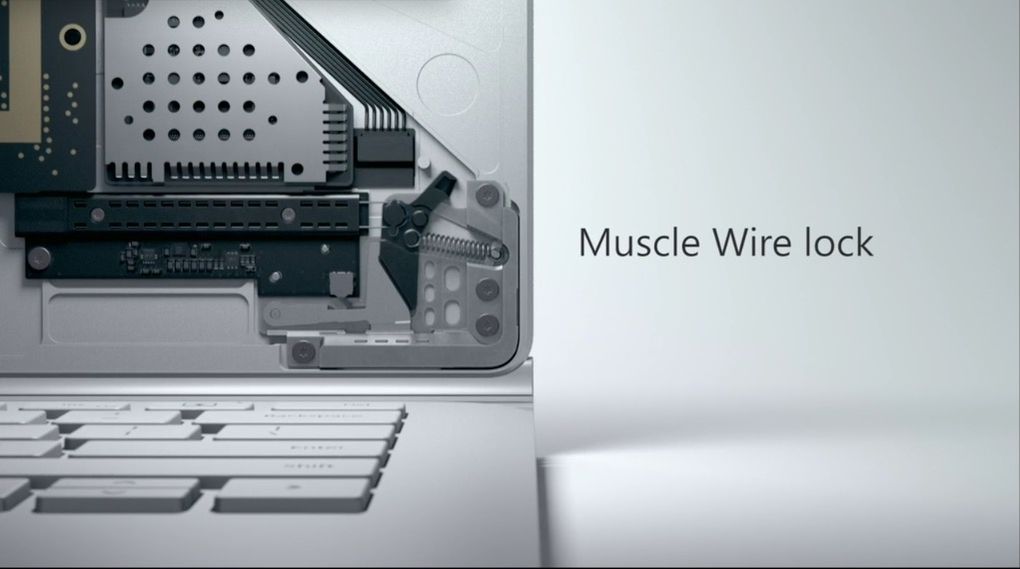This morning, Microsoft’s Terry Myerson opened what appeared to be a rather action-packed keynote. Many former rumors have been confirmed, in regard to upcoming devices, but the most important aspect of today’s keynote was the emphases on the Surface product line, which is now, finally, beginning to solidify, and become just as important to Microsoft, as the MacBook is to Apple, and in more ways than one.

Microsoft HoloLens
Development Kits for Microsoft HoloLens have been finally announced, and will be available in the first quarter of 2016. Each kit will be priced at $3000. While it’s unclear whether the cost of each kit is indicative of the pricing we can expect from future commercial releases of Microsoft HoloLens.
Microsoft Band
Microsoft’s new version of its flagship fitness wearable device has been upgraded with a new design, featuring a curved Gorilla Glass 3 touchscreen display, GPS, UV monitoring, guided workout, notifications, and of course, Cortana integration. The introduction of a new barometer sensor enables elevation tracking, as well as a new feature called VO2 Max, designed as a way to track and measure the maximum oxygen intake an athlete can use during a workout. The device will be available October 30th, and priced at $249.
Lumia Phones
Before getting into the Surface line of products, Microsoft opened with a few announcements, in regard to Microsoft Lumia phones. In line with previous rumors, two new handsets have been presented: the 5.2 inches, 518ppi, Lumia 950, powered by a 6-core CPU, and the 5.6 inches, 564ppi, Lumia 950XL.
Both phones integrate Triple LED RGB flash, 20MP camera sensor, 5th generation optical stabilization, 32GB of cloud storage, with upgrade options up to 2TB. The USB-C connector allows to charge the handsets up to 50%, in less than 30 minutes. The smartphones also come with tablet-class liquid cooling, and an interesting addition is the camera button, which is very much a first on a touchscreen smartphone.
A new dock has been introduced, along with the new Lumia phones, which enables easier connectivity to peripherals and external drives, when using Continuum to connect the devices to an external display, and use it in desktop mode, like a PC, with universal apps scaling up to a full-desktop view. The dock features 3 USB ports for accessories, and support for full HD 1080p resolution.
The new devices will be available in November, and priced starting at $549, with a lower-end option for budget users, in the form of a quad-core Lumia 550, starting at $149.
Finally, the Microsoft Surface Pro 4
The reinvention of the 12.3 inches flagship tablet PC comes now with a 267ppi, 5 million pixels display, using PixelSense technology. The new photo-aligned oxide display, features a glass panel 400 microns thin, with a 1.1mm backlight unit, powered by a G5 chipset.
The updated device is 8.4mm thin, and features up to 1TB of internal storage, 16GB of RAM, and fingerprint reader built into the keyboard. The array of connectors feature four USB 3.0 ports, two 4K display ports, Ethernet, and a new, updated Surface Pen.
The updated pen is capable of 1024 points of pressure, all-year battery life, built-in eraser, interchangeable pen tips, and it now comes in five colors.
The Surface Pro 4 also includes a newly redesigned type cover with a new key set featuring 1.3mm travel scissor design, and a larger precision glass trackpad. In this new iteration.
Microsoft Surface Pro 4 is available for pre-order, and will be officially available October 26th, starting at $899.
Did Microsoft just had a “One more thing...” moment?
The big surprise today was none other than the Microsoft Surface Book, Microsoft’s first full-size laptop device. This is pretty exciting news as Microsoft is finally breaking in the stage to be a laptop manufacturer in its own right.
The Intel Core i7 powered Microsoft Surface Book, as the name suggests, features a number of characteristics belonging to the Surface tablet, such as the detachable base, which comprises the backlit keyboard and the nVidia GeForce GPU featuring GDDR5 memory. Weighing at 1.6lb, the device is 7.7mm thin, the Surface Book’s magnesium body, features a hinge connecting the base to the display. The proprietary feature, called “fulcrum hinge”, allows for 180 degree rotation of the 13.5 inches, 267dpi PixelSense touch screen display, as well as reversed docking, and is capable of instantly detaching, through “Muscle Wire Lock”, which is another proprietary mechanism, built specifically for the new laptop.
When detached, the display becomes a stand-alone tablet device, which is proportionate in size to an A4 sheet of paper, with Surface Pen support.
Microsoft Surface Book will be available by mid-October, starting at $1499.